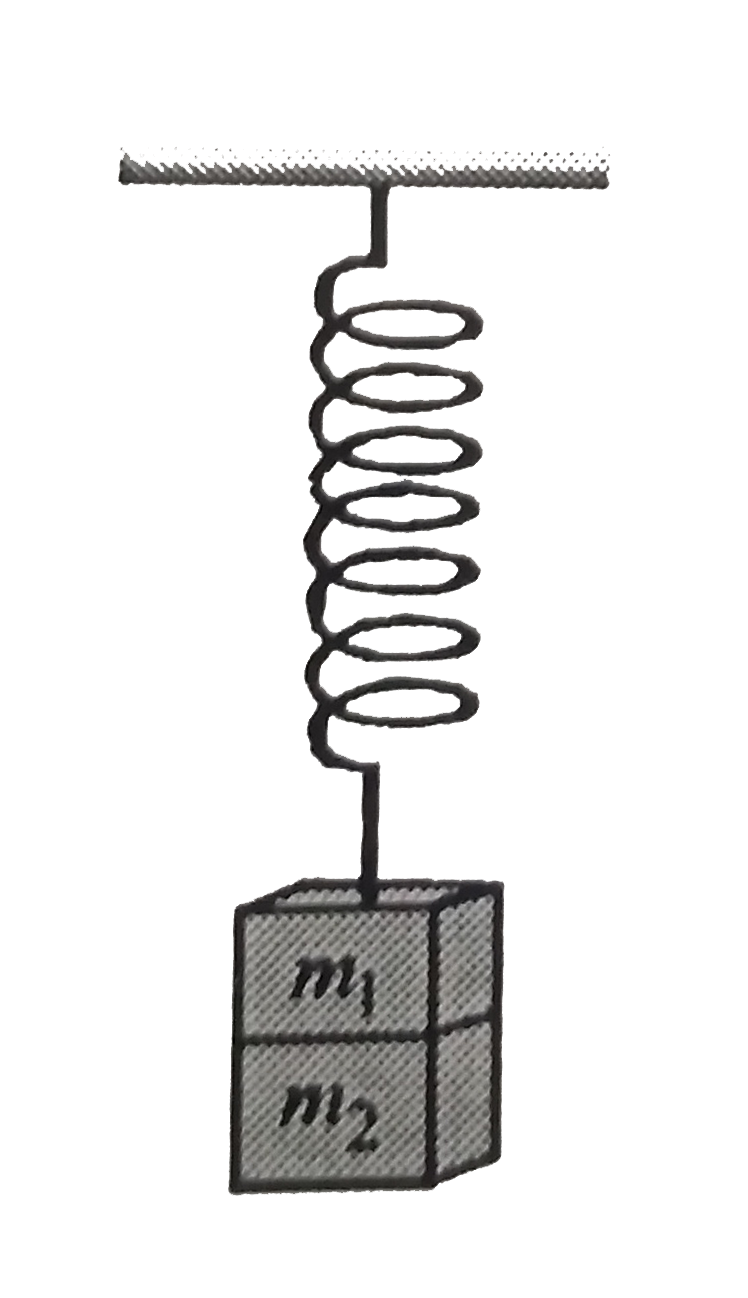A partical of mass m1 is travelling with avelocity u1 strikes head-on against partical of mass m2 at rest.After collision the particales move with a velocity v1 and v2 respectively .show that the ratio of decrese in K.E of the partical of mass m1 to its original K.E is given By 4m1m2(m1+m2)2Solution in Assamese
Step by step video & image solution for A partical of mass m1 is travelling with avelocity u1 strikes head-on against partical of mass m2 at rest.After collision the particales move with a velocity v1 and v2 respectively .show that the ratio of decrese in K.E of the partical of mass m1 to its original K.E is given By (4m1m2)/(m1+m2)^2 by Physics experts to help you in doubts & scoring excellent marks in Class 11 exams.
Updated on:21/07/2023Topper's Solved these Questions
Similar Questions
What is meant by power? How it is related to work?
View SolutionWhat is a wave motion?
View Solutionf(x)=|x-1|+|x-2|,g(x)=x+(1)/(x),x>0* if m 1=min(f(x)) and m2=min(g(x)) then (m2+m1)/(m2-m1) is equal to
View SolutionTwo masses m1 and m2 are connected by light string, which passes over the top of a smooth plane inclined at 30º to the horizontal, so that one mass rests on the plane and the other hangs vertically as shown in fig. It is found that m1, hanging vertically can draw m2 up the full length of the plane in half the time in which m2 hanging vertically draws m1 up. Find m1/m2 . Assume pulley to be smooth-

View SolutionTwo masses m1 and m2 are suspended together by a massless spring of constant k. When the masses are in equilibrium, m1 is removed without disturbing the system. The amplitude of oscillations is

View SolutionDiscuss different cases, to find final velocities for two bodies in the below expression for v_(1f)=((m1-m2)v1i)/(m1+m2) and v_(2f)=(2m1v1i)/(m1+m2)
View SolutionIn the figure shown, when the persons A and B exchange their positions, then (m2>m1) the plank moves towards_________
View SolutionThe system is in equilibrium and at rest. Now mass m1 is removed from m2 . Find the time period and amplitude of resultant motion. (Given : spring constant is K.)
View SolutionIf the temperatures of samples of the same material with masses of m1 and m2 are T1 and T2, respectively, then the resulting temperature of the mixture
View SolutionA stationary partical explodes into two partical of a masses m1andm2 which move in opposite direction with velocities v1andv2. The ratio of their kinetic energies E1/E2 is
View SolutionTwo masses m1 and m2 are suspended together by a massless spring of constant k. When the masses are in equilibrium, m1 is removed without disturbing the system. The amplitude of oscillations is

View SolutionA partical of mass m oscillates along the horizontal diameter AB inside a smooth spherical AB inside a smooth sperical shell of radius R . At any instate K.E. of the partical is K . Then force applied by partical on the on the shell at this instant is:
View SolutionA partical of mass 4⋅10−27kg moving with velocity one m/seccolides with another similar partical at rest inelastically.If the partical after colision combine togather,Find the velocity of the combined mass.
View SolutionShow that in one dimensional elastic collision of two particales of equal mass,the partical exchange velocities after collisions.
View SolutionDefine the co-efficient of restitution. A particle of a mass m moving with a velocity u struck head-on against another particle of mass Km at rest.After collision the particles move with velocities V1 and V2 respectively.If the collision is prefectly elastic.Prove that the loss of kinetic energyof the particle with mass m is maximum when k=1.
View Solution
